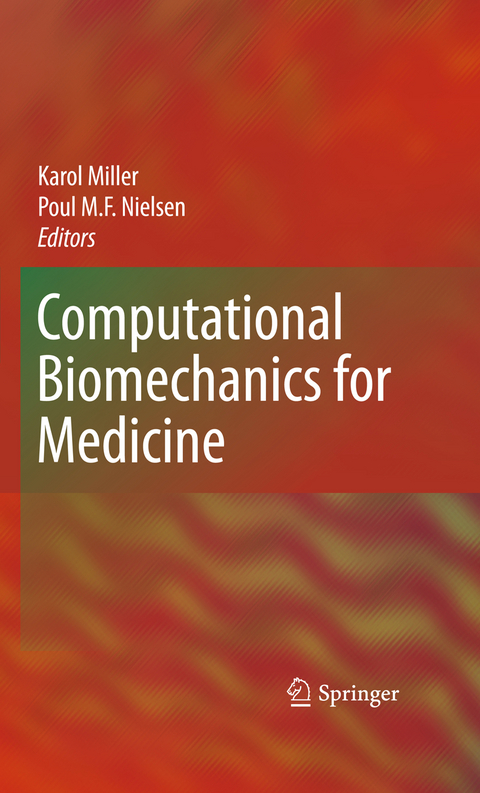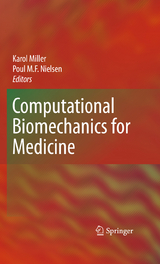Computational Biomechanics for Medicine
Springer-Verlag New York Inc.
978-1-4419-5873-0 (ISBN)
Computational biomechanics of soft tissues and flow.- Patient-Specific Modelling of Cardiovascular and Respiratory Flow Problems – Challenges.- MRI Tissue Segmentation Using a Variational Multilayer Approach.- Mapping Microcalcifications Between 2D Mammograms and 3D MRI Using a Biomechanical Model of the Breast.- Accuracy of Non-linear FE Modelling for Surgical Simulation: Study Using Soft Tissue Phantom.- Patient-Specific Hemodynamic Analysis for Proximal Protection in Carotid Angioplasty.- Cortical Surface Motion Estimation for Brain Shift Prediction.- Method for Validating Breast Compression Models Using Normalised Cross-Correlation.- Can Vascular Dynamics Cause Normal Pressure Hydrocephalus?.- Computational biomechanics of tissues of musculoskeletal system.- Computational Modelling of Human Gait: Muscle Coordination of Walking and Running.- Influence of Smoothing on Voxel-Based Mesh Accuracy in Micro-Finite Element.- Biomaterial Surface Characteristics Modulate the Outcome of Bone Regeneration Around Endosseous Oral Implants: In Silico Modeling and Simulation.- Subject-Specific Ligament Models: Toward Real-Time Simulation of the Knee Joint.- Ergonomic Assessment of Hand Movements in Laparoscopic Surgery Using the CyberGlove®.- Effects of Fetal Head Motion on Pelvic Floor Mechanics.- Novel Monitoring Method of Proximal Caries Using Digital Subtraction Radiography.
| Zusatzinfo | XII, 155 p. |
|---|---|
| Verlagsort | New York, NY |
| Sprache | englisch |
| Maße | 155 x 235 mm |
| Themenwelt | Mathematik / Informatik ► Informatik ► Theorie / Studium |
| Medizin / Pharmazie ► Physiotherapie / Ergotherapie ► Orthopädie | |
| Studium ► 1. Studienabschnitt (Vorklinik) ► Physiologie | |
| Technik ► Medizintechnik | |
| ISBN-10 | 1-4419-5873-8 / 1441958738 |
| ISBN-13 | 978-1-4419-5873-0 / 9781441958730 |
| Zustand | Neuware |
| Informationen gemäß Produktsicherheitsverordnung (GPSR) | |
| Haben Sie eine Frage zum Produkt? |
aus dem Bereich




